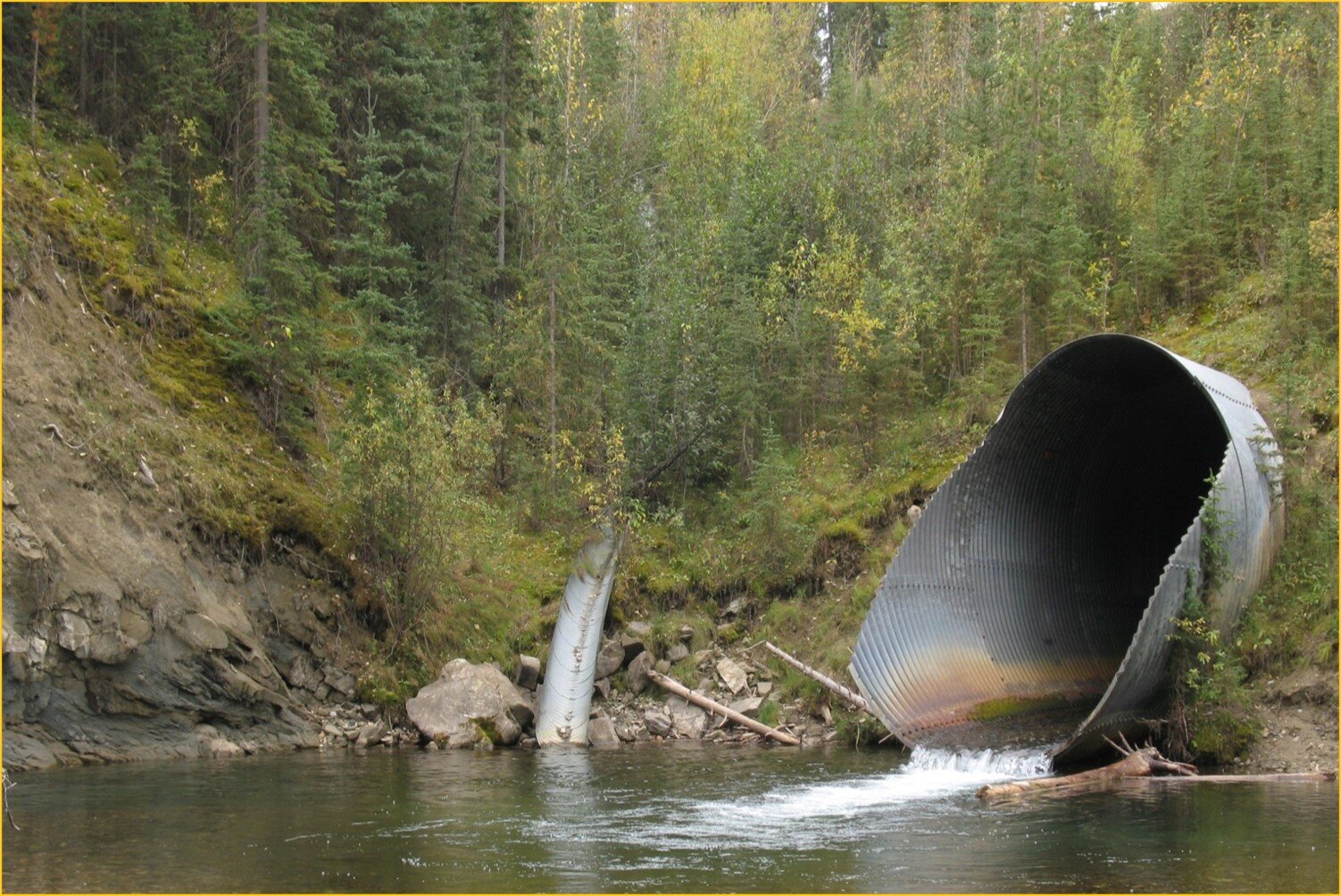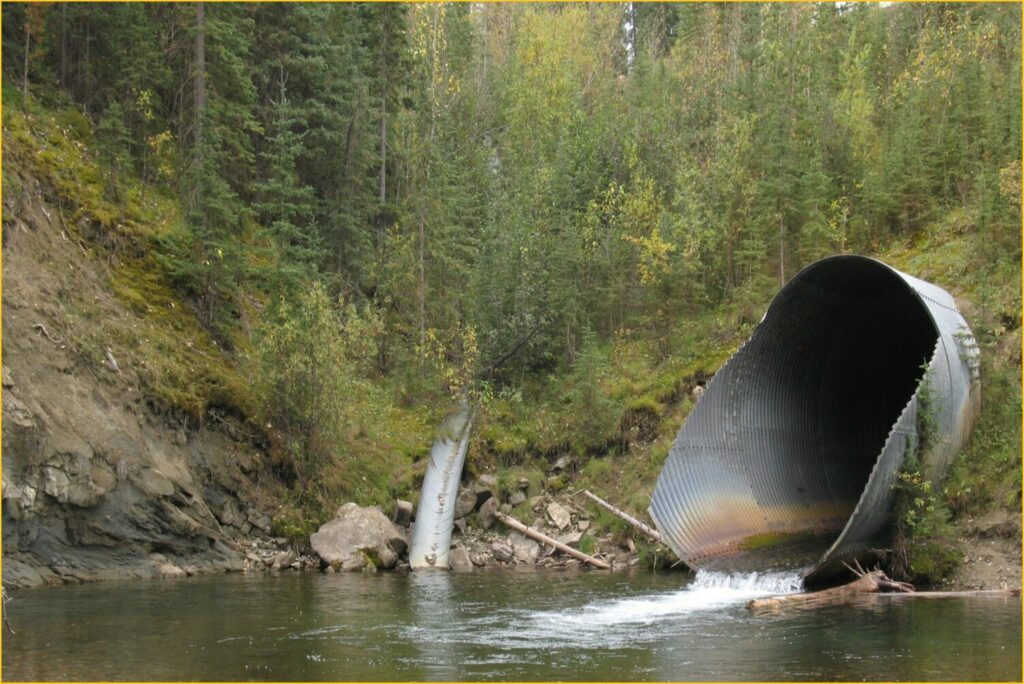Did you know that there are hundreds of thousands of watercourse crossings in Alberta? And did you know that many of them have the potential to negatively influence the ability of Alberta’s fish species to migrate between important habitats?
Alberta is home to more than 50 fish species, many of which complete lengthy migrations between wintering, feeding and spawning habitats. These migrations can occur seasonally or annually, and they can (for some species, at least) include incredible treks over 100 km. Unfortunately, where road crossings are constructed improperly, left unmaintained, abandoned, or removed and replaced by ford crossings, negative impacts to fish and fish habitat are common consequences. Erosion of banks and sedimentation into watercourses are frequent realities of improperly or unmaintained watercourse crossings, and in worst case scenarios habitat fragmentation (or the preclusion of fish passage under or through the crossing structure) occurs.
Habitat fragmentation is among the most negative influences currently affecting fish species of conservation concern in this province (e.g., Athabasca Rainbow Trout, Arctic Grayling, Westslope Cutthroat Trout and Bull Trout). Alberta’s Watercourse Crossing Program is hoping to change that.
Since the magnitude of crossing remediation needs in Alberta is considerable (in the 1000’s), regulators are working with crossing owners to identify and prioritize remedial needs while providing crossing owners with the flexibility needed to focus remediation efforts on priority crossings. Since 2015, the province’s Watercourse Crossing Management Directive has outlined the inspection/monitoring process to be implemented by crossing owners in Alberta’s Eastern Slopes. This directive was recently expanded to the Boreal Region as well.
AJM is ready to help! Beginning in 2020, AJM became recognized by the AER as a qualified third-party provider for inspection and remedial services under the Watercourse Crossing Management Directive. Even prior to this recognition, AJM staff have gained experience implementing the directive’s inspection form and tackling remediation programs. If you are a crossing owner and need help inspecting/prioritizing remedial needs, let us know!
For the citizen scientists out there, there is also a Watercourse Crossing Inventory App available so that you can help identify potential problem crossings. The inspection process through this App is scaled back in comparison to that required of crossing owners, but information collected by citizen scientists is still absolutely welcomed by the program and can help build their database of sites that may be influencing fish migration. If interested, please visit this link to learn more about the program and download the app!

